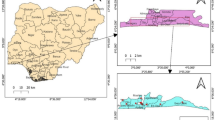Abstract
A new method for automatic event–cause classification in power distribution networks for the detection and clustering of previously unknown classes of transient voltage waveforms is presented. The approach performs the detection of novelties—events that are not present during modeling of the classifier—in addition to the classification of known events, using a formulation based on support vector data description. Additionally, an unsupervised clustering method for novelties is proposed, in order to collect relevant information about their features and allow identification of new classes of events, which constitutes the main contribution of this work. Two different automatic clustering methods are compared: X-Means clustering and Rival Penalized Expectation Maximization. Experiments using both simulated and real data for the entire classification process, which includes multi-class classification with novelty detection and identification of new classes, are presented. The results obtained demonstrate that the proposed method fully agrees with current trends in smart distribution networks, in which automatic identification, characterization, and mitigation of events are critical for network operation and maintenance.




Similar content being viewed by others
Notes
One can represent all the inner products in the Lagrangian using a kernel, allowing more flexible descriptions (Wu and Ye 2009).
References
Biswal, B., Biswal, M., Mishra, S., Member, S., & Jalaja, R. (2014). Automatic classification of power quality events using balanced neural tree. IEEE Transactions on Power Electronics, 61(1), 521–530.
Bollen, M., & Gu, I. (2006). Signal processing of power quality disturbances. Chichester: Wiley-IEEE Press.
Cheung, Y.-M. (2005a). Maximum weighted likelihood via rival penalized EM for density mixture clustering with automatic model selection. IEEE Transactions on Knowledge and Data Engineering, 17, 750–761.
Cheung, Y.-M. (2005b). On rival penalization controlled competitive learning for clustering with automatic cluster number selection. IEEE Transactions on Knowledge and Data Engineering, 17, 1583–1588.
Dahal, N., Abuomar, O., King, R., & Madani, V. (2015). Event stream processing for improved situational awareness in the smart grid. Expert Systems with Applications, 42(20), 6853–6863. ISSN 09574174.
De Yong, D., Bhowmik, S., & Magnago, F. (2015). An effective power quality classifier using wavelet transform and support vector machines. Expert Systems with Applications, 42(15–16), 6075–6081.
EMTP. (1995). Alternative transients program rule book. Canadian/American EMTP User’s Group.
Ferreira, D. D., Seixas, J. M. D., & Cerqueira, A. S. (2015). A method based on independent component analysis for single and multiple power quality disturbance classification. Electric Power Systems Research, 119, 425–431. ISSN 03787796.
Hao, P. Y., Chiang, J. H., & Lin, Y. H. (2007). A new maximal-margin spherical-structured multi-class support vector machine. Applied Intelligence, 30, 98–111.
Koziy, K., Gou, B., & Aslakson, J. (2013). A low-cost power-quality meter with series arc-fault detection capability for smart grid. IEEE Transactions on Power Delivery, 28, 1584–1591.
Lazzaretti, A. E., Ferreira, V. H., Vieira Neto, H., Riella, R. J., & Omori, J. S. (2013). Autonomous neural models for the classification of events in power distribution networks. Journal of Control, Automation and Electrical Systems, 24(5), 612–622.
Lazzaretti, A. E., Tax, D. M. J., Neto, H. V., & Ferreira, V. H. (2015). Novelty detection and multi-class classification in power distribution voltage waveforms. Expert Systems with Applications, 45, 322–330. ISSN 0957-4174.
Lidula, N. W. A., & Rajapakse, A. (2012). A pattern recognition approach for detecting power islands using transient signals—part II: Performance evaluation. IEEE Transactions on Power Delivery, 27, 1082–1094.
Liu. T. -Y. (2013). Statistical Learning for Sample Limited High Dimensional Problems with Application to Biomedical Data. Ph.D. thesis, University of Michigan.
Mahela, O. P., Shaik, A. G., & Gupta, N. (2015). A critical review of detection and classification of power quality events. Renewable and Sustainable Energy Reviews, 41, 495–505. ISSN 1364-0321.
Mohanty, S. R., Pradhan, A., & Routray, A. (2008). A cumulative sum-based fault detector for power system relaying application. IEEE Transactions on Power Delivery, 23, 79–86.
Mu, T., & Nandi, A. K. (2009). Multiclass classification based on extended support vector data description. IEEE Transactions on Systems, Man, and Cybernetics, Part B, 39, 1206–1216.
Pelleg, D., Moore, A. (2000). X-means: Extending k-means with efficient estimation of the number of clusters. In 17th international conference on machine learning.
Ray, P., Kishor, N., & Mohanty, S. (2012). Islanding and power quality disturbance detection in grid-connected hybrid power system using wavelet and S-transform. IEEE Transactions on Smart Grid, 3, 1082–1094.
Scheirer, W. J., de Rezende Rocha, A., Sapkota, A., & Boult, T . E. (2013). Toward open set recognition. IEEE Transactions on Pattern Analysis and Machine Intelligence, 35, 1757–1772. ISSN 1939-3539.
Tcheou, M., Lovisolo, L., Ribeiro, M., da Silva, E., Rodrigues, M., Romano, J., et al. (2014). The compression of electric signal waveforms for smart grids: State of the art and future trends. IEEE Transactions on Smart Grid, 5, 291–302.
Wu, M., & Ye, J. (2009). A small sphere and large margin approach for novelty detection using training data with outliers. IEEE Transactions on Pattern Analysis and Machine Intelligence, 31, 2088–2092. ISSN 1939-3539.
Zhou, Q.-F., Hao, H. Z., Ning, Y.-P., Yang, F., & Li, T. (2015). Two approaches for novelty detection using random forest. Expert Systems With Applications, 42(10), 4840–4850.
Acknowledgments
This work was partially supported by the Energy Company of Paraná, within the Research and Development Program of the Brazilian Electrical Energy Agency (Project Number 2866-256) and the Coordination for Improvement of Higher Education Personnel (CAPES). The authors would like to thank David M. J. Tax and Cleverson L. S. Pinto for their support during the completion of this work.
Author information
Authors and Affiliations
Corresponding author
Rights and permissions
About this article
Cite this article
Lazzaretti, A.E., Ferreira, V.H. & Neto, H.V. New Trends in Power Quality Event Analysis: Novelty Detection and Unsupervised Classification. J Control Autom Electr Syst 27, 718–727 (2016). https://doi.org/10.1007/s40313-016-0265-z
Received:
Revised:
Accepted:
Published:
Issue Date:
DOI: https://doi.org/10.1007/s40313-016-0265-z



